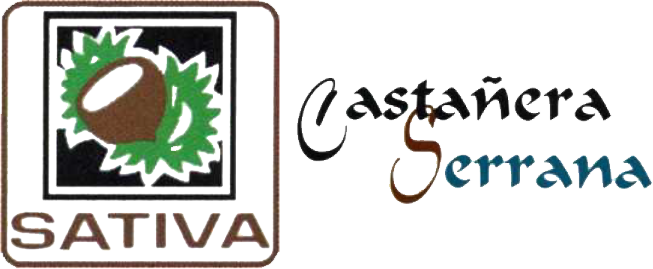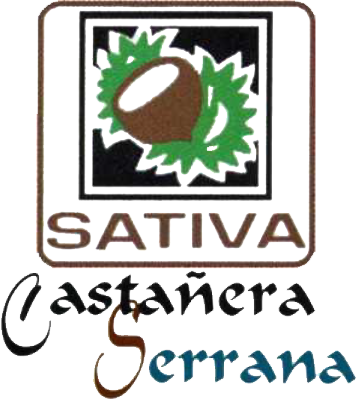Our process steps

Cooperativa Castañera Serrana’s activity today takes care of the first steps of handling the fresh chestnuts for their commercialization in their fresh state. The employed processes aim mainly at the conservation of the fresh chestnut, they are the following:
- Reception and cleaning
- Antiparasitic treatment and grading
- Conservation
- Selection anda Packing
Reception and cleaning

The chestnuts arrive at the cooperative and are accepted. The farmers bring the chestnuts in breathable sacks and empty them into pallets. Each lot is given a sequential number and identified with the farmer’s member number in order to guarantee it’s traceability. Once in our premises, the chestnuts are weighed and run through a first machine (a drum), where all impurities gathered during the harvest are eliminated, concurrently, if necessary, the smallest chestnuts (more than 100 units/kg) are separated. The drum makes it possible to eliminate any residues coming in together with the chestnuts: earth, leaves, stones… as well as the smaller chestnuts not meant for fresh human consumption. Usually these are used for animal feed or for further industrial processing for human and animal consumption. At the same time statistical samples are taken to assign the lot its average number of units per kilo as well as its average percentage of chestnuts with the following defects:
- Cracked (sold as a sub-product)
- Perforated (visibly damaged by parasites)
- Spoon (unshapely, empty, with grooves or spoon-shaped)
- Fungus (affected by fungus)
- Hidden parasite damage
- Floating (floats in water)
Anti-parasitic treatment and grading

After having received and cleaned the chestnuts, they are given an antiparasitic treatment by immerging them in warm water. This technique makes it possible to kill all the insect eggs and larvae that might be present, in addition to a noticeable reduction of eventually present fungus and other microorganisms. The chestnuts are immersed in warm water at 50ºC for a short time, roughly 45 minutes, long enough to kill insect eggs and larvae, but not long enough to alter the properties of the chestnuts. As no chemical agents are employed, later on the product can be sold as eco-friendly.
The anti-parasitic treatment and grading process is composed of the following 4 steps:
- Warm-water drum for deparasitation
- Cooling basin, to bring the chestnuts back to room temperature and concurrently separate the chestnuts floating on the surface
- Drying by forced ventilation.
- Grading (up to 6 categories)
Conservation

Once the chestnuts have been deparasited and graded, they are stored at low temperature until the moment of their packing. Castañera Serrana has 2 refrigerated storage rooms with a capacity of 961 m³ each. Accounting for sufficient space for handling, each room can store 160,000 kg of chestnuts.
Selection and packing

The chestnuts are taken out of the storage at the moment of the order preparations. Before their packing they are controlled manually on big, well-lit tables. The workers eliminates all those chestnuts that have visible defects (cracked, perforated, spoon-shaped, affected by fungus) and that have slipped through the selection in the cooling vat. Because all unsuitable chestnuts have thus been separated, one by one for their sale as animal feed or further industrial processing, it is made certain that only healthy chestnuts proceed to the packing process. In the following the chestnuts are brushed to give them back the shine they have lost during the previous processes, and they are packed in the format desired by each customer.
With the available machines we can offer different packing formats for the different grades, like for example:
GirPlus-nets of 1 kg and 2 kg
Bags, sacks and boxes of different weights (5 kg, 10 kg, 15 kg, 25 kg etc.)
Finally the packages are stacked on pallets and prepared according to the criteria of international refrigerated transport. It is very important to not interrupt the cold chain to make sure that the product does not deperish during transport and stays in good conditions for the following sale.


